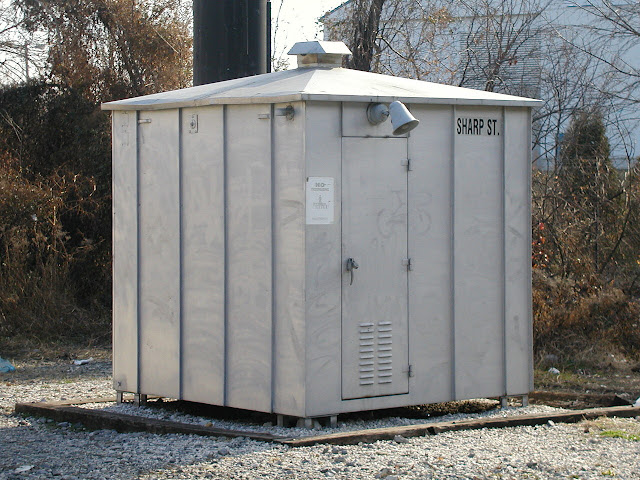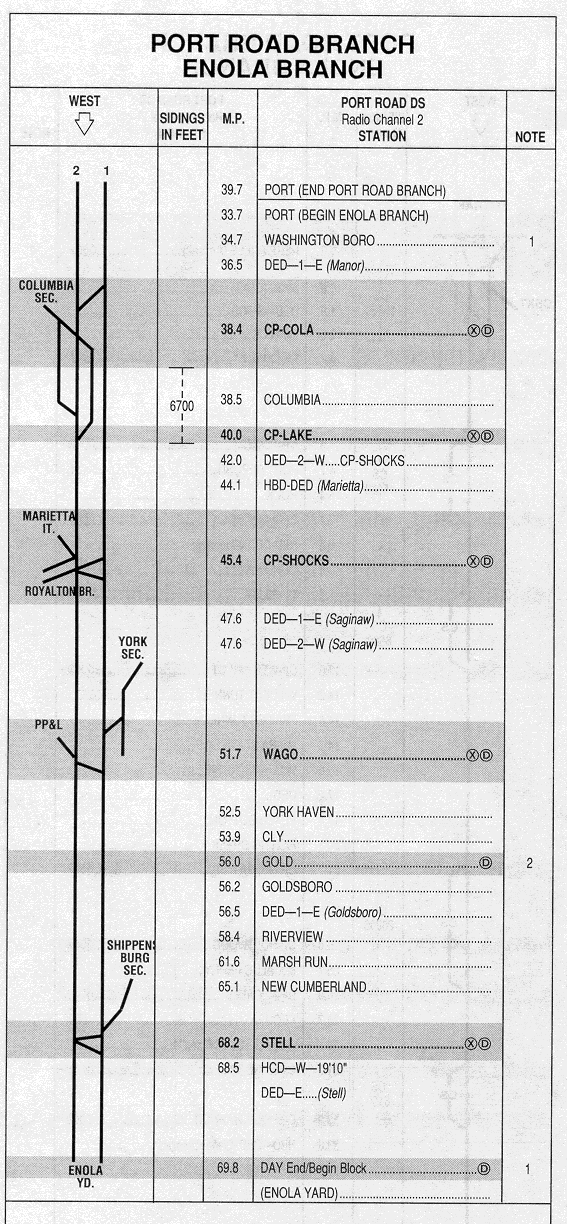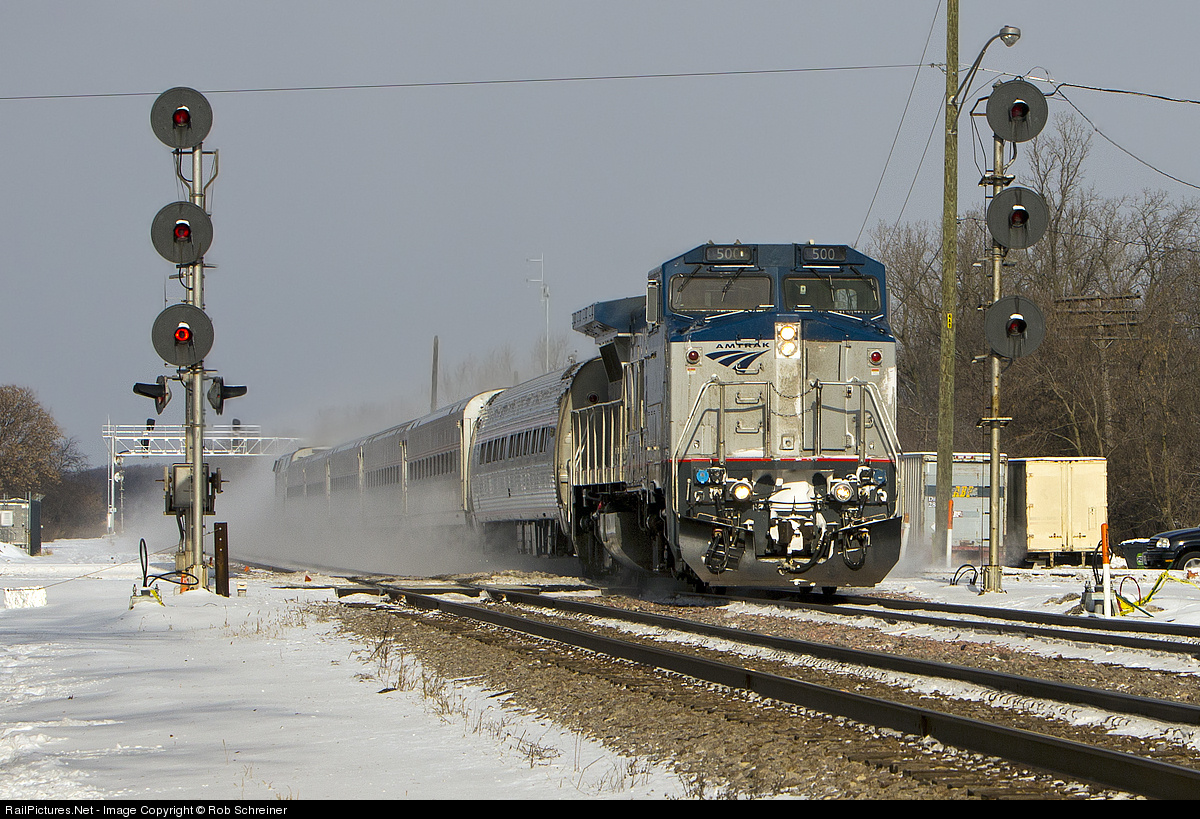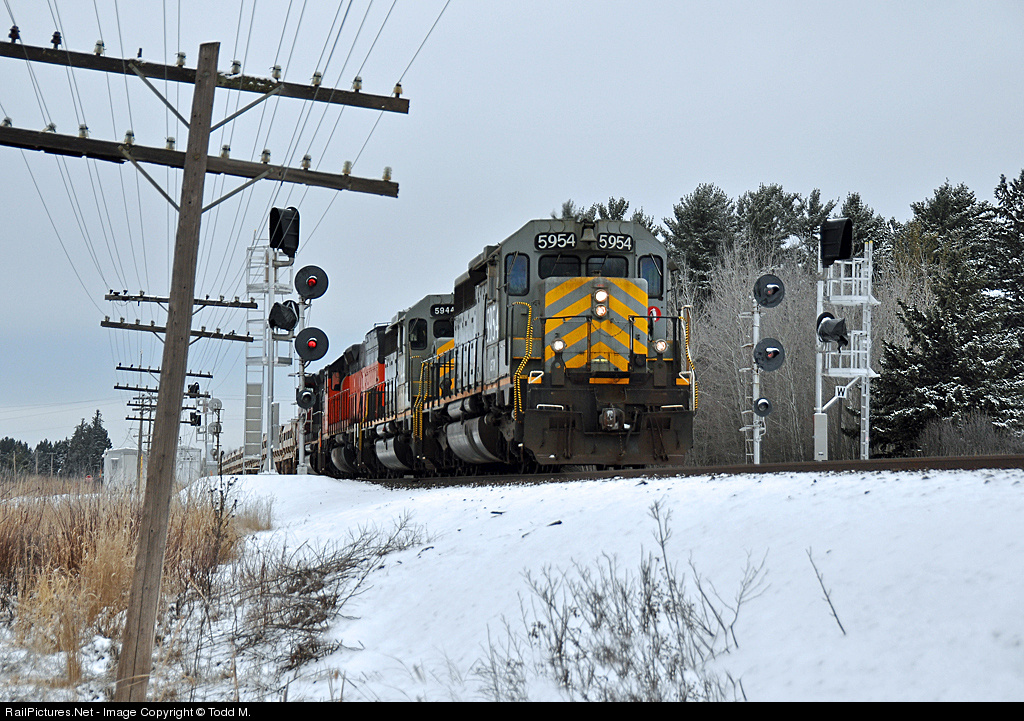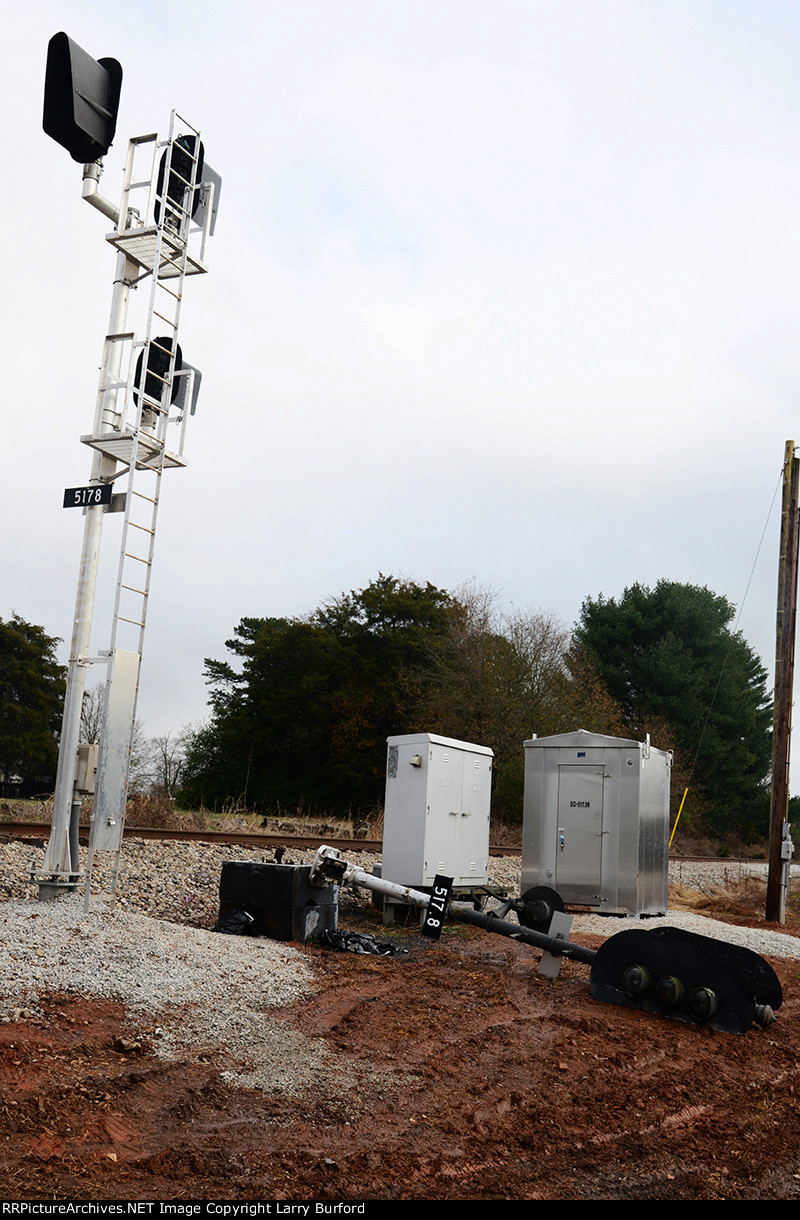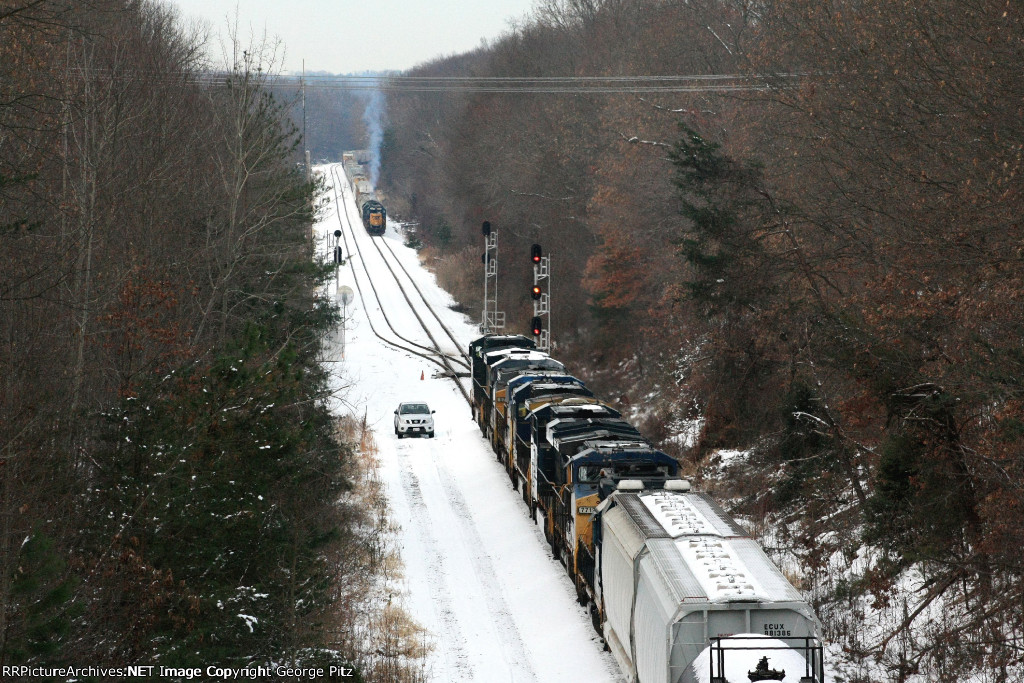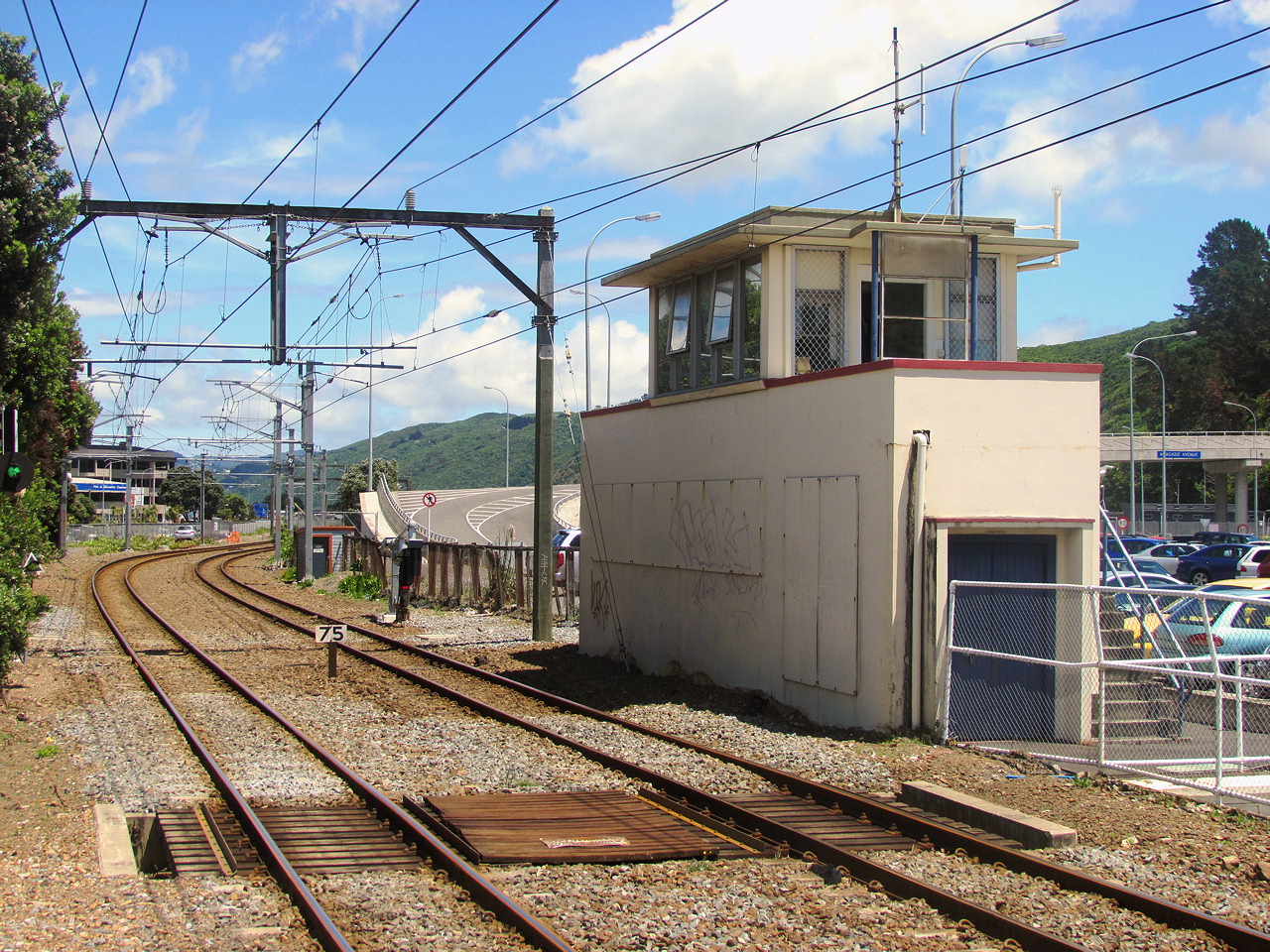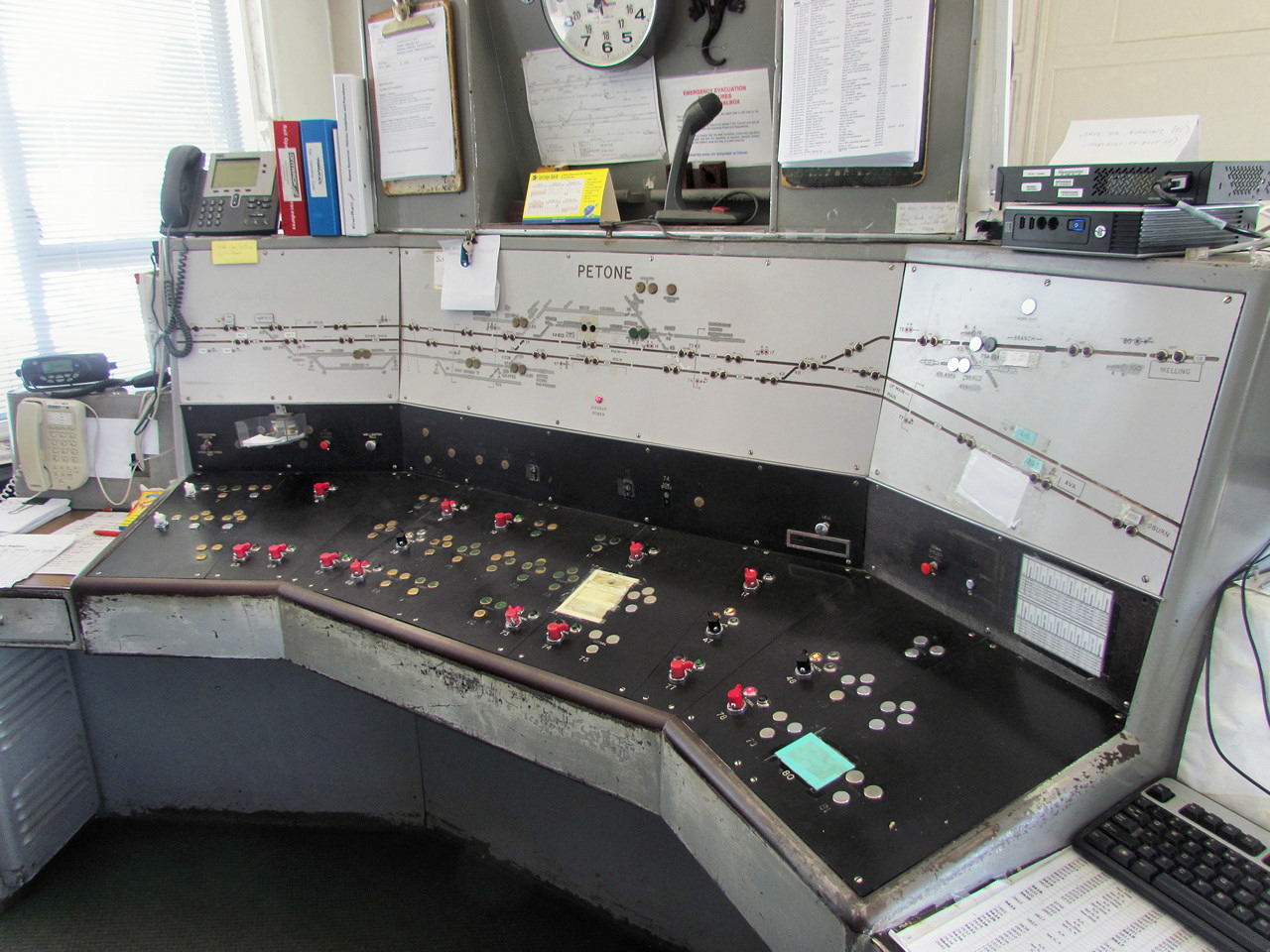The concept of an interlocking horn is pretty simple and basically serves as a method for the dispatcher or operator controlling the interlocking to communicate with train crews or other personnel who might happen to be in the area. As you may have already surmised the use of binary state sound generators to transmit information have been generally supplanted by radios and mobile phones, but interlocking horns can still be found mounted on present day relay huts installed up through the current day (2014).
I first learned of interlocking horns in a discussion of Pennsylvania Railroad block operation where they were described as being used to stop trains in an emergency if the operator became aware of an unsafe condition, but the train had already passed the controlling signal. The operator would sound the horn and upon hearing it either the locomotive crew or (more likely) the rear end crew would bring the train to an immediate stop and use a line side telephone to communicate with the tower operator. The practice always sounded a bit dodgy to me as trains are a loud place to work and unlike a visual signal it is a bit harder to verify that an alertness signal is not being sounded. Still, horns can be made very loud and with 2 or 3 people riding in the caboose it was likely that at least somebody would catch the signal that the bridge ahead was out. Still, a quick glance through the current NORAC rulebook shows that interlocking horns are a bit more complicated than that with a vocabulary that approximates the old trainline communication whistle system that was ultimately supplanted by crew radios. Here is the exact text of NORAC rule 18.
18. Horn Signals Used by Dispatchers or OperatorsLong story short the interlocking horn was intended to stop train movements or get some sort of wayside employee to call the dispatcher or operator. In my discussions with current operators and dispatchers I have found that in modern times the horns are rarely used in this capacity. More often than not they are used to scare children or other trespassers off the tracks or perhaps to warn nearby employees of approaching train movements although in those situations a full time whistle/safety man is often on had to do the job.
The following are horn signals that may be used by Dispatchers or Operators at interlockings or other designated points. The signals are illustrated by “o” for short sounds and “—” for long sounds.
SOUND INDICATION
(a) — All movements within interlocking limits must stop immediately.
(b) o o Normal movement may be resumed after receiving the proper signal or permission of Operator.
(c) o o o Whistle or Horn test.
(d) o o o o Signal maintainer must call the Dispatcher or Operator.
(e) o o o o o Electric traction employee must call the Dispatcher or Operator.
(f) o o o o o o Trackman must call the Dispatcher or Operator.
(g) A bell, horn, white light or oscillating white light at remotely controlled signals and interlockings indicates that any employee, except on moving trains, must immediately communicate with the Dispatcher or Operator.
Horn buttons in towers could be mounted on their own as seen in OVERBROOK, but often times they were placed on a panel with numerous other buttons for lights or communications or special interlocking functions.
 |
| Insect infestation is a problem in Tidewater Virginia. |
Unfortunately as these and other 1970's era CTC relay houses are being replaced the new CSX standard hut does not provide for the continued employment of interlocking horns. Even in the 1970's use of interlocking horns was not uniform as can be seen with LEE HALL interlocking being provided with an slender truck style horn while only two miles away WEST LEE HALL was not provided with one at all.
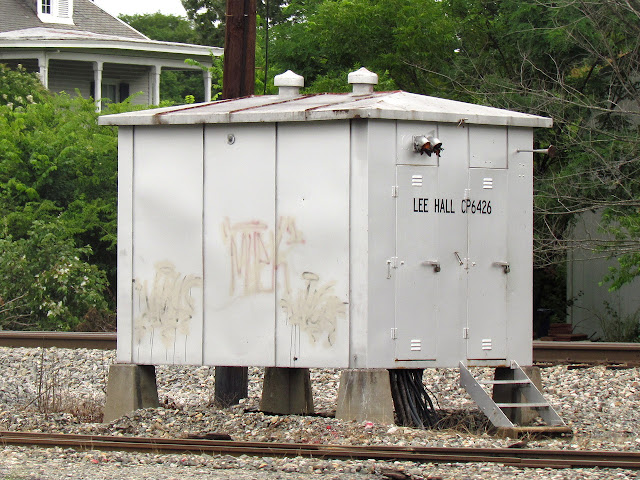 |
| Truck horn and exposed cloth and tar insulated wire bundles. Classy. |
As technology marched on so did the design and employment of the horns used at interlocking. In fact some could barely be considered horns at all like this loudspeaker device mounted to the relay hut of LEADENHALL ST interlocking in downtown Baltimore, MD.
 |
| NJT is also committed to the lineside telephone box. |
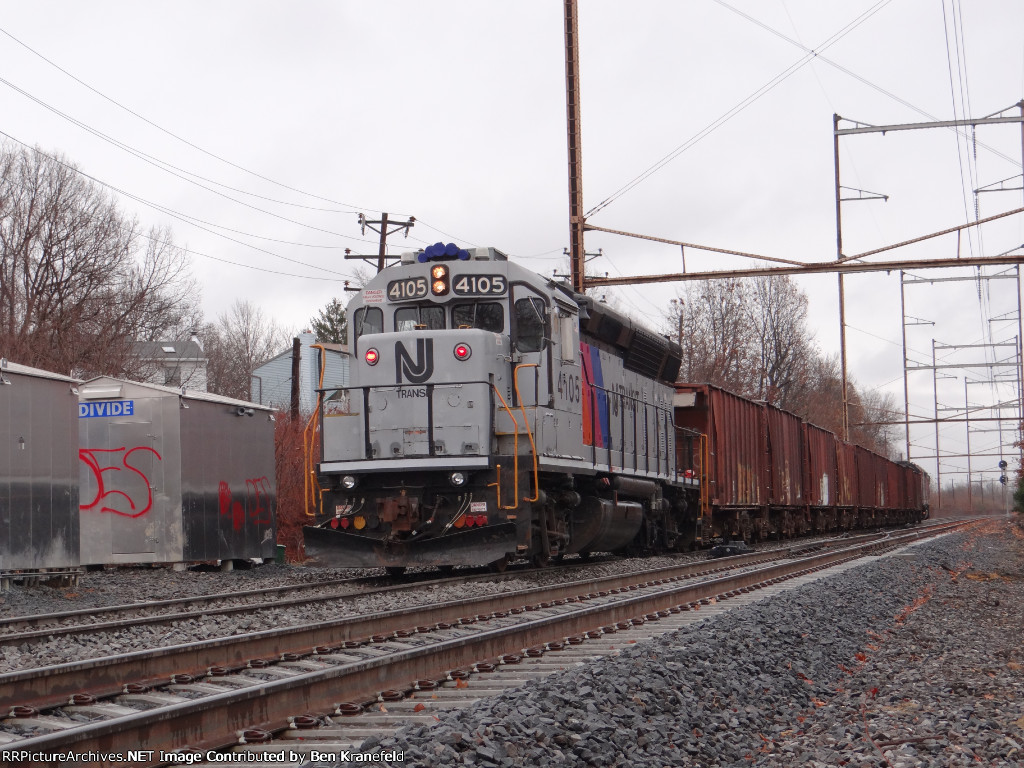 |
| Yes, that is a new relay hut design. |




